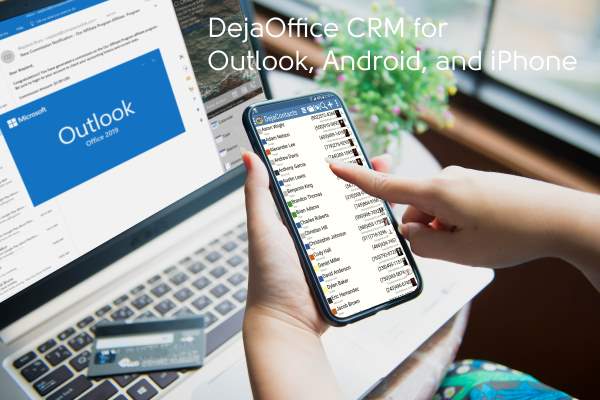Web Solutions has never been more crucial before. The technology in 2025 drives efficiency, but at the same time requires you to be exact. Today, websites are the sort of hub for your operated, consumer connection, and workflows. Not matching these systems can cause different delays and disruptions.
Web platforms need to be incorporated into how an enterprise operates for the business to succeed. That means every feature, tool, and system must serve the specific needs of the business. Having web solutions that sync systems with the end user facilitates efficiency, accountability and reliability within operations.

What is Synchronizing Business Systems and Its Types
Business systems synchronization means that the tools and processes within an organization communicate without any gaps in time. It removes information silos, expands data flow, and improves operational efficiency. Synchronization integrates the internal system with tools and websites, enabling them to maintain real-time updates, which enhances the overall workflow.
Types of Synchronizing Business Systems:
Data Integration
That integrates your CRMs, ERPs, cloud storage systems. An example would be a CRM that integrates with a website and updates customer profiles in real time when a web form is submitted. Refers to the accuracy of customer data across platforms.
Process Automation
It enables running repetitive tasks automatically in response to predefined events, or in other words, it automates repetitive tasks As an example, an invoice can be created automatically in an accounting system when an invoice has been generated through a form on the website, eliminating manual steps, while increasing accuracy.
Service Synchronization
This connects customer service solutions, like chat bots or ticketing systems, with internal systems. For example, if a user queries through a website chatbot, we can route it to the support teams quicker using synchronization.
E-commerce Synchronization
It integrates payment gateways, inventory management, and order fulfillment systems for seamless transactions. For instance, if the inventory system is integrated with a website, stock information is updated in real-time when a purchase is made.
API-Based Integration
Application Programming Interfaces (APIs) enables you to connect numerous systems through websites. Example: A visitor tracking API, where a user visiting the website is able to use geo-data with real-time updates in the analytics dashboards.
Cloud-Based Synchronization
This brings all platform data to cloud storage for easier accessibility. Example of a business document submitted via a portal on a website synchronizing with shared cloud-based drives.
The synchronization of systems simplifies the operation, provides a coherent management, and allows systems to be connected directly in real-time. These types help to improve business process by ensuring data validity, seamless workflows, and more improved user experiences.
Why Seamless Integration with Business Workflows Matters:
Companies require websites that tie into their internal processes. Such a website that offers a feature of seamless integration with business workflows can help in eradicating double work having taken place and save a lot of time and effort. Plugins like Elementor solve this problem by providing drag-and-drop simplicity. It allows teams to build fully-functional pages without bespoke code.
Embedding a website to business processes helps to maintain the free flow of information among connected systems. Other integrations, like syncing with CRMs or order management systems, enhance the customer experience. When systems are not integrated, it usually causes a miscommunication, data processing errors. Frictionless workflows are the backbone of business, and without them, businesses risk not being efficient.
Without a set of integrated workflows guiding all systems, reliability suffers. Orders can slip through the cracks, customer tickets can disappear, and the team ends up mired in troubleshooting. When integrated incorrectly, it leads to wastage of resources and loss of customers.
For example, companies can connect order forms to back-end tracking systems to facilitate rapid fulfilment. In this case, the website plays an active role in the flow of information and demand for accountability.
Why Businesses Needs Unified Hosting
There is a unified hosting for business operations which keeps all the services and tools under a single platform. A single hosting solution is more stable and minimizes downtime compared to split systems. With use case such as Elementor, it helps create website section which fit seamlessly with your hosting platforms.
It improves performance by hosting a website on business systems. Backups are easy with shared hosting, and the access to data is quicker. Unified hosting is off the table, so businesses find it difficult to enhance their accessibility and responsiveness propensities.
Different servers for different databases from these servers lead to fragmented data management thus killing the real time nature of updates and resulting in version mismatches. This can jeopardize strategic goals and customer trust even only misalignments.
Consider a cloud environment that hosts workflow tools and operational data under one platform. This guarantees the website loads and displays live site updates quickly without any crashes.
Website Solutions to Help Automate Manual Processes
Websites that automate stuff: These lower human effort and increase accuracy. Endless smaller task run through scalable systems allowed automation, eliminate labor costs. Things like automated forms or workflows are built into websites by many businesses using tools like Elementor.
From processing forms submitted by users to merely updating an internal order status, automations have everything covered. Post 1: Actively Automation reduces a lot of the errors associated with human-driven processes. Growing workloads are not well-suited for manual processes. Unlike labor, where we need to train more people, automation can scale up instantaneously alongside demand.
If automation is avoided, it often leaves employees with mundane and repetitive tasks. Inefficiencies of this sort suck up time use up productivity and slow the response time to customers. Same goes with the errors, all the committed errors increase which creates question on the business credibility Remember??
For instance, consider order submissions. Direct submission of forms to ERP systems encourages workflow automation. Processing in real time helps in speedy approvals and greater visibility for all stakeholders.
Data Centralization: Why you should centralize across platforms
Therefore, businesses need centralized systems, where all data comes together and gets updated automatically. Seamless deployment for business functions enables centralized business data storage. To connect websites with APIs and cloud-based storage systems, tools like Elementor make web design more manageable.
With a centralized approach, all information is housed within a single, easily accessible hub. Different teams, like marketing and sales work with the same live data. Such removes the silos that often delay decision-making processes and result in data inconsistencies.
Lacking centralized systems, companies depend on many different sources of truth, making operations messier. The data points of marketing teams may differ from the data points of sales teams. As a result, marketing strategies can differ from sales priorities. Over time, this siloed strategy limits growth.
Through the use of API, company business could connect inventory information between the website and the management systems. This centralized approach allows for increased visibility and ensures that stakeholders across platforms receive up-to-date information in a timely manner.

Boosting Customer Portals for Back Office Operations
Increased connection → Customer portal → Customer portals on websites→ Customer portals work → Drive(s) satisfaction and functionality They are also critical for successful integration with real-time systems as there are features of these portals only needed for system integration. This is where Elementor lends a hand by enabling visually-intuitive and highly-functional portal sections.
Good portal connects customers to operational systems that run the business. These connections are used to track orders, facilitate return, or access subscription services. Failing portals only diminish customer satisfaction as any delays or stale data directly affect their operations.
External customers engage in fragmented experience with human error and incomplete orders without integrated portals. Frustrations mount and they leave for your compete.
For example, Integrating between the support ticket portal and the internal service management system ensures smooth flow. Doing so also keeps everyone aligned for resolution purposes, and faster resolutions of issues.
Scalability Simplified: The Power of Web Flexibility
As businesses grow, website solutions need to evolve with them without starting from scratch. Flexibility enables organizations to scale without breaking the integration of the systems. Adaptive layouts by Elementor make it easy to tweak things by maintaining its working even after an upgrade.
Flexible solutions provide agility in scalability since they enable integrations on demand. When a website supports a modular approach, new functions can be added without much disruption. With capabilities such as this, businesses do not need to make unnecessary changes to their systems.
Such systems are rigid and inflexible and can lead to operational bottlenecks sooner than expected. With reconfiguring the old systems takes much time that results in stagnated growth among the teams. Being behind in such a cut-throat scene creates permanent ripple effects in revenue.
Consider a business, for instance, expanding to a new country, what they need to do is offer new payment mechanisms. Scalable site integration guarantees smooth updating of these into such systems and providing convenience for users worldwide.
Maintaining All-in-one Compliance and Security
Seamless integration works highest with security frameworks that are sturdy enough Data also needs the validation of various compliance standards by websites. Developers can use the tools provided by Elementor to add features that facilitate encryption and access control right on the site.
Businesses face data breach risks from non-compliant or insecure systems. Embedding secure workflows with linked business systems minimizes the vulnerabilities. Companies stuck finding compliance structures that have largely outlived their usefulness risk penalties, reputational damage, or even litigation.
Picture businesses, encrypted checkout processes, connected to backend systems. This proves that you can be trusted and reduces the chance of breaching.
Conclusion
Complete integration between the systems that run your business and the websites that you use to put that business in front of customers is a demand for the future. It provides to handle workflows efficiently, co-host the operation of businesses, and ushers in smart customer experience scenarios. Elementor-like platforms stay essential — they simplifies integrations, but keep the flexibility.
By investing in such connections, businesses eliminate inefficiencies or customer displeasure. They leverage operational precision with full support from technology making them outclass competition. Synchronization is not optional, it is the new standard for winning in 2025 and the next decade.






